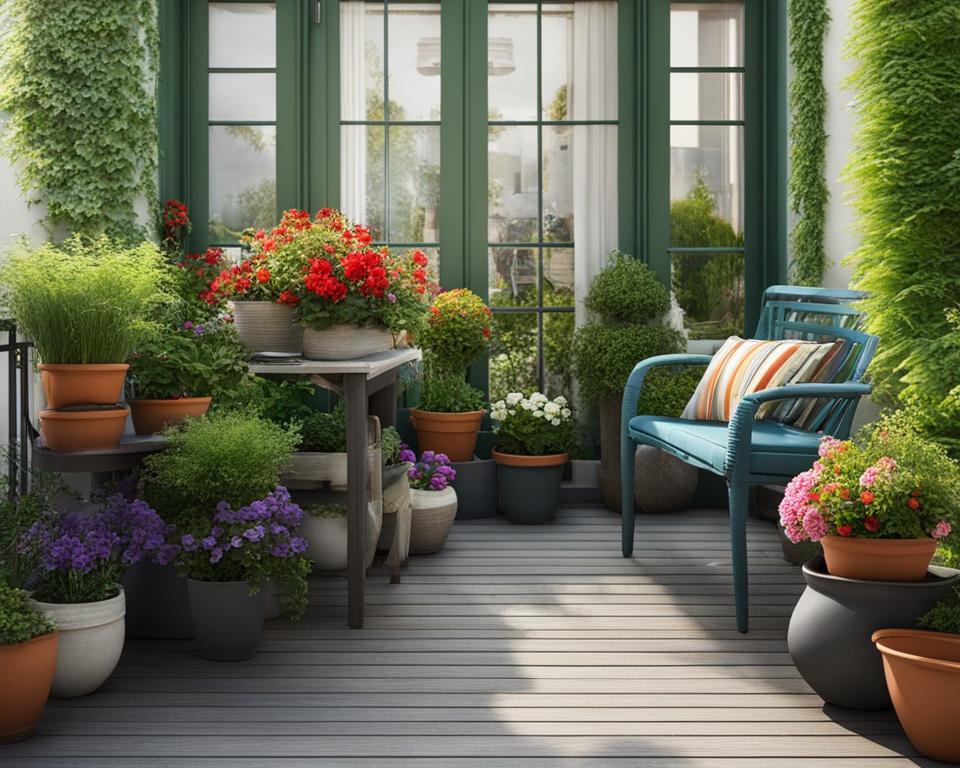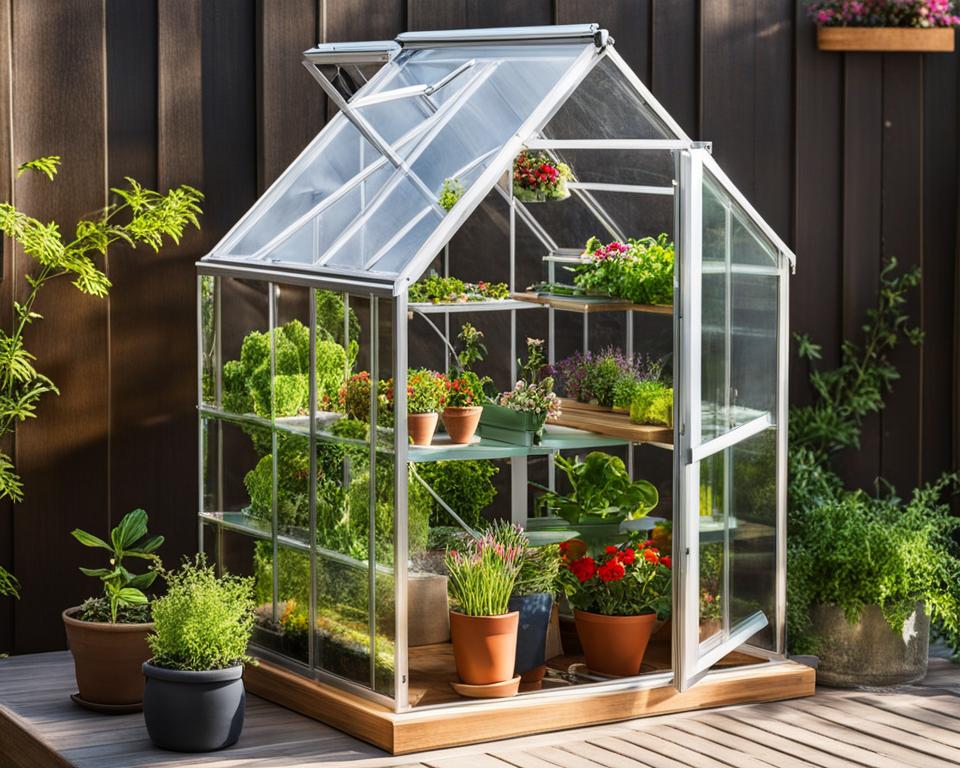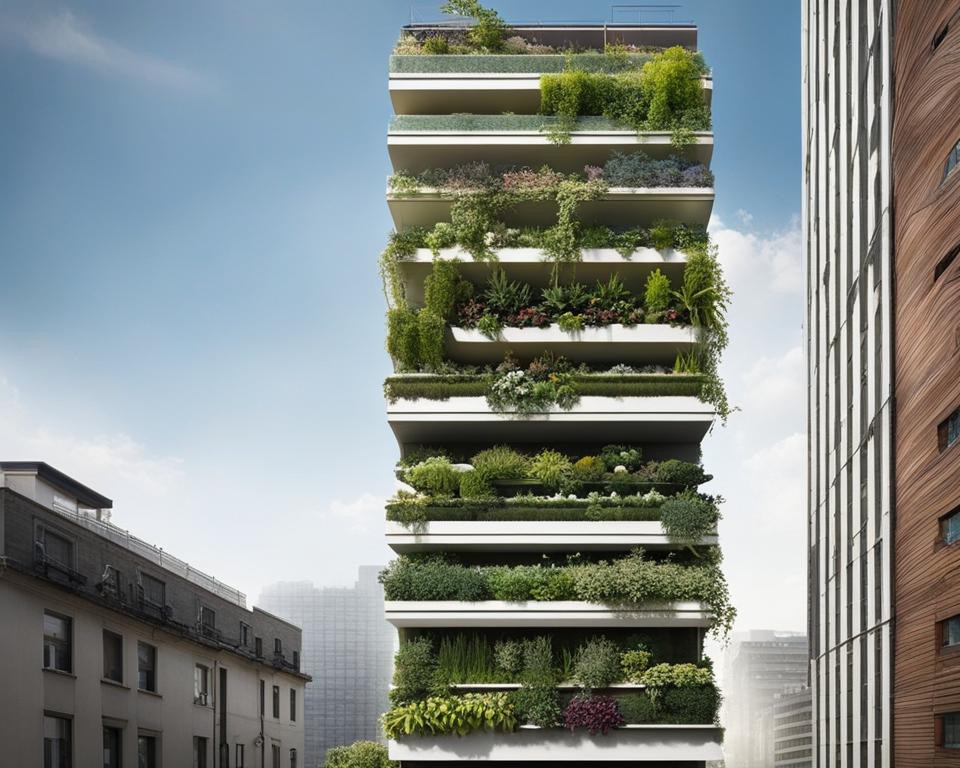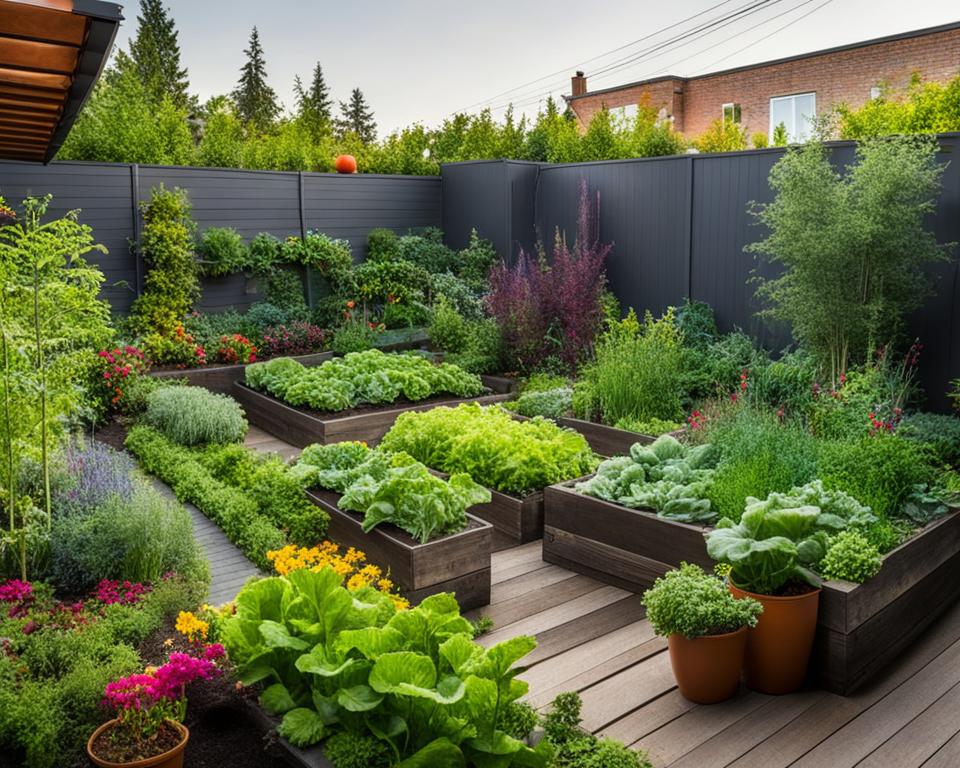Are you interested in transforming your home into a green oasis? With urban gardening, you can bring the beauty of nature right to your doorstep. Whether you have a small balcony, a rooftop, or just a few containers, there are endless possibilities for creating a thriving urban garden.
In this article, I will share with you some incredible home urban gardening tips and trends that will help you make the most of your space. From beginners to seasoned gardeners, there’s something here for everyone.
Explore the world of home urban gardening with me as we dive into tips, ideas, and techniques that will inspire and guide you on your urban gardening journey.
Create a Community Garden
I’m a firm believer in the power of community and the benefits of connecting with our neighbors. That’s why creating a community garden is not only a great way to grow your own vegetables and herbs but also an opportunity to build relationships and foster a sense of belonging. By gardening in shared outdoor spaces, we can transform urban areas into vibrant, green oases.
When starting a community garden, it’s important to take into account the guidelines and rules specific to your neighborhood or building. This ensures that everyone is on the same page and can work together harmoniously. Collaborative garden designs, where multiple gardeners can contribute and care for the space, are highly recommended. This promotes teamwork, camaraderie, and the sharing of knowledge and resources.
Don’t worry if you’re new to gardening or don’t have all the necessary gardening supplies. Many community gardens have a shared supply of tools, seeds, and compost that can be used by all participants. This makes it easier for beginners to get started and encourages the exchange of ideas and expertise among community members.
| Benefits of Creating a Community Garden |
|---|
| 1. Access to fresh, locally grown produce |
| 2. Improved mental and physical well-being |
| 3. Increased social connections and sense of belonging |
| 4. Education and skill-building opportunities |
| 5. Beautification of the community and green space creation |
By creating a community garden, we not only reap the rewards of homegrown vegetables but also contribute to the overall well-being of our community. So let’s roll up our sleeves, grab our gardening tools, and start transforming shared outdoor spaces into thriving gardens that bring people together.
Design an Urban Rooftop Garden
When it comes to urban gardening, rooftops offer a unique and often overlooked opportunity to create a lush green oasis in the heart of the city. With the right design and planning, you can utilize the wasted space on your rooftop and transform it into a beautiful and productive garden. Before getting started, it’s important to understand the regulations and considerations specific to rooftop gardening to ensure a successful and safe project.
Regulations for Rooftop Gardening
Rooftop gardens are subject to specific regulations, especially in densely populated areas. It’s essential to check with your local authorities to understand any restrictions or permits required for rooftop gardening. Some regulations may include weight limits, structural integrity assessments, and guidelines for water drainage. Compliance with these regulations is crucial to ensure the safety of both your garden and the building itself.
Utilizing Wasted Space
One of the key advantages of designing a rooftop garden is the opportunity to utilize otherwise wasted space. By transforming your rooftop into a garden, you can create a vibrant and green environment, enhancing the aesthetic appeal of your home or building. Additionally, rooftop gardens provide insulation, reducing energy consumption and improving the overall environmental sustainability of the structure.
To maximize the use of space, consider incorporating vertical gardening techniques such as trellises, hanging planters, or vertical gardens mounted on walls. These methods not only save horizontal space but also add depth and visual interest to your rooftop garden.
Lightweight Planters and Air Flow
When selecting planters for your rooftop garden, opt for lightweight options to minimize the structural load on the building. Wooden, fiberglass, or foam planters are excellent choices as they are durable yet lightweight. This allows you to create a lush garden without compromising the structural integrity of the rooftop.
Adequate air flow is also essential for rooftop gardens as they can be exposed to intense heat and wind. Incorporate lattices, pallet walls, or trellises to create windbreaks and provide support for climbing plants. These elements not only improve air flow but also enhance the overall visual appeal of your rooftop garden.
| Advantages of Rooftop Gardening | Considerations for Rooftop Gardening |
|---|---|
|
|
By designing a rooftop garden, you can make the most of your urban space while enjoying the beauty and benefits of nature. Remember to research and adhere to regulations, utilize lightweight planters, and ensure proper air flow to create a thriving rooftop garden that is both visually stunning and environmentally sustainable.
Turn Your Balcony into a Garden

If you have a small space but still want to enjoy the beauty and benefits of gardening, turning your balcony into a garden is the perfect solution. With a balcony garden, you can create a lush oasis right outside your door, filled with vibrant plants and fresh herbs. Whether you have a small balcony or a spacious one, there are plenty of options to suit your space and style.
Container pots are a versatile and practical choice for balcony gardens. They come in various sizes and styles, allowing you to customize your garden to fit your space. You can choose to plant a mixture of flowers and herbs, or focus on growing your own vegetables. Hanging planters are another great option, especially if you have limited floor space. They can be hung from the ceiling or attached to the railing, adding vertical interest and maximizing your growing area.
Vertical planters are a popular choice for balcony gardens. They allow you to grow plants vertically, making efficient use of your space. You can create a living wall of cascading plants or a herb garden with small pots stacked one above the other. Another option is balcony planters that attach directly to the railing, allowing you to create a beautiful railing garden. These planters come in various designs and sizes, giving you plenty of options to choose from.
In summary:
- Container pots are a versatile choice for balcony gardens.
- Hanging planters maximize limited floor space.
- Vertical planters make efficient use of space by growing plants vertically.
- Balcony planters that attach to the railing create a beautiful railing garden.
With these options, you can transform your balcony into a garden oasis, no matter how small your space may be. Enjoy the beauty of nature, grow your own herbs or vegetables, and create a peaceful retreat right outside your door.
Opt for a Container Garden
When it comes to small space gardening, a container garden is a perfect solution. With pots, barrels, and buckets, you can create a thriving garden right on your balcony or rooftop. Not only does a container garden allow you to grow plants in limited space, but it also adds a decorative touch to your urban oasis.
To get started with your container garden, gather all the necessary gardening supplies such as gravel, soil, and pellet fertilizer. Choose a variety of pots and containers that have enough room for your plants to grow. Ensure proper drainage by adding holes to the bottom of the containers. This will prevent water from pooling and causing root rot.
Creating a container garden allows you to have a versatile and portable green space in your home. Whether you want to grow flowers, herbs, or even vegetables, the options are endless. It’s a rewarding and fulfilling way to embrace small space gardening and enjoy the benefits of homegrown produce.
If you have limited space, consider utilizing double-potting techniques. This involves placing a smaller pot inside a larger one, with a layer of insulation material in between. Double-potting helps regulate the temperature of the roots, keeping them cool on hot days and protecting them during freezing temperatures. It’s an effective method for maintaining healthy plants in any climate.
| Benefits of a Container Garden | Challenges of a Container Garden |
|---|---|
|
|

Benefits of a Mini Greenhouse
- Protection from harsh weather conditions
- Extended growing season
- Ability to grow delicate plants
- Controlled environment for optimal plant growth
- Opportunity to experiment with different plant varieties
- Maximization of limited space
Tips for Setting Up a Mini Greenhouse
- Choose a sunny location for your mini greenhouse.
- Consider using shelving or hanging pots to optimize vertical space.
- Use materials such as PVC pipes or wooden frames to build your greenhouse.
- Ensure proper ventilation to prevent overheating.
- Provide adequate watering and drainage for your plants.
- Monitor temperature and humidity levels to create an optimal growing environment.
Grow a Vertical Garden
When it comes to small space gardening, a vertical garden is a smart and stylish solution. By utilizing the vertical space in your home, you can create a lush and vibrant garden even in the tightest of areas. Vertical gardens are particularly well-suited for those with limited outdoor space, as they can be built on walls, fences, or even indoors.
To create a vertical garden, consider using vertical planters that allow you to stack your plants on top of each other. These planters come in various sizes and designs, making it easy to find one that suits your style and space requirements. Another option is to train vines to grow upwards, using garden trellises or even repurposed bookcases and standing shelves as support structures.
“Vertical gardens are a fantastic way to add beauty and greenery to your home, especially if you’re working with a small space. Plus, they provide excellent insulation, reducing heat absorption and lowering your energy bills.”
One of the benefits of vertical gardens is that they can be both functional and visually appealing. Not only do they allow you to grow a wide variety of plants, including flowers, herbs, and vegetables, but they also serve as a natural backdrop and can enhance the aesthetics of your space. Whether you choose to create a vertical garden indoors or outdoors, this innovative gardening technique is sure to impress.

Benefits of Growing a Vertical Garden
- Maximizes small spaces, perfect for urban gardening
- Allows for more plants to be grown and displayed
- Provides insulation, reducing heat absorption
- Enhances aesthetics and adds a decorative element to your space
- Offers easy access for maintenance and harvesting
Whether you have a small balcony, limited yard space, or even just a bare wall indoors, a vertical garden is a creative and efficient way to bring greenery into your home. Embrace the vertical gardening trend and watch as your space transforms into a lush oasis.
Create a Rain Gutter Garden
If you’re looking for a cost-effective and portable gardening solution for your small outdoor area, a rain gutter garden is the perfect choice. With a rain gutter garden, you can utilize vertical space and grow a variety of plants, even in the tightest of spaces. This type of garden is especially popular for apartment balconies and small patios, where traditional gardening methods may not be feasible.
To create a rain gutter garden, all you need are some basic supplies:
- Rain gutters
- End caps
- Support brackets
- Drill and screws
- Plants and potting soil
To get started, measure the length of your outdoor area and purchase rain gutters accordingly. Attach the end caps to seal off the gutters and prevent soil from spilling out. Mount the support brackets onto the wall or railing, ensuring they are sturdy enough to hold the weight of the gutter.
Once your rain gutters are securely in place, drill small drainage holes along the bottom. Fill the gutters with potting soil and plant your desired herbs, flowers, or vegetables. Ensure that the plants receive sufficient sunlight and water regularly to keep them thriving.
“The rain gutter garden is a fantastic option for urban gardeners who have limited space. It allows you to grow a variety of plants vertically, making the most of your small outdoor area.” – Urban Gardening Enthusiast
Table: Comparison of Rain Gutter Garden and Container Garden
| Rain Gutter Garden | Container Garden |
|---|---|
| Utilizes vertical space | Utilizes horizontal space |
| Cost-effective | Requires additional pots and planters |
| Portable | May require moving heavy containers |
| Easy to set up | Requires more planning and arrangement |
| Suitable for small outdoor areas | Works well in larger spaces |
As you can see, a rain gutter garden offers a space-saving and cost-effective alternative to traditional container gardening. It’s a simple and efficient way to enjoy the benefits of gardening, even in a small outdoor area.
Conclusion
Urban gardening is an exciting and rewarding way to bring nature into your city abode. By following these tips and utilizing the available space, you can create a thriving urban garden and enjoy the benefits of fresh homegrown produce. Whether you choose to create community gardens, design rooftop gardens, transform your balcony, or utilize containers, there are endless possibilities for home urban gardening. Embrace your inner green thumb and start your urban gardening journey today!
FAQ
What is urban gardening?
Urban gardening refers to the practice of growing plants, vegetables, and herbs in small spaces within urban areas, such as homes, balconies, rooftops, or community gardens.
Why should I start a community garden?
Community gardens provide fresh food to “food deserts,” foster a sense of community, and allow neighbors to work together. They also offer an opportunity for individuals to learn about gardening and improve access to nutritious food.
How can I start a community garden?
Before starting a community garden, check the guidelines and rules specific to your neighborhood or building. Collaborative garden designs that allow multiple gardeners to work together are recommended to enhance teamwork and collaboration.
What are rooftop gardens?
Rooftop gardens are gardens that utilize otherwise wasted space on rooftops. They can be an excellent option for urban gardening. However, it’s important to check regulations regarding weight limits, especially in older buildings, and opt for lightweight planters to minimize weight.
How can I transform my balcony into a garden?
To transform your balcony into a garden, utilize container pots, hanging or vertical planters, and pallet walls to maximize space. Ensure access to sunlight and protect from wind. Balconies are ideal for growing annual and perennial plants or even vegetables like tomatoes, lettuce, and cucumbers.
What is container gardening?
Container gardening is perfect for small spaces like patios, balconies, and rooftops. It involves using a variety of pots, small barrels, boxes, or buckets to create your garden. Make sure your pots have enough room for plants to grow and proper drainage. Essential gardening supplies like soil, fertilizer, and a watering can or hose are needed.
How can I create a mini greenhouse?
To create a mini greenhouse, consider using a DIY version on a small scale. Mini greenhouses are efficient for indoor and outdoor urban gardens and can be suitable for small balconies, apartment rooftops, and patios. They add a touch of urban jungle flair to your living space or houseplants.
What is a vertical garden?
A vertical garden is a great way to create a vibrant urban garden in a small space. It involves allowing vines to grow along walls or using vertical planters. You can buy ready-to-assemble vertical garden kits or learn how to make your own on a fence. Garden trellises, bookcases, and standing shelves can also be utilized to maximize vertical space.
How can I arrange a rain gutter garden?
A rain gutter garden provides an easy solution for portable urban gardening if you don’t have access to a yard or plan to move in the near future. Rain gutters are cost-effective and can be utilized as an alternative to larger garden pots, shelves, or plant racks. You can set up your rain gutter garden on a fence or railing or create a hanging gutter garden.

